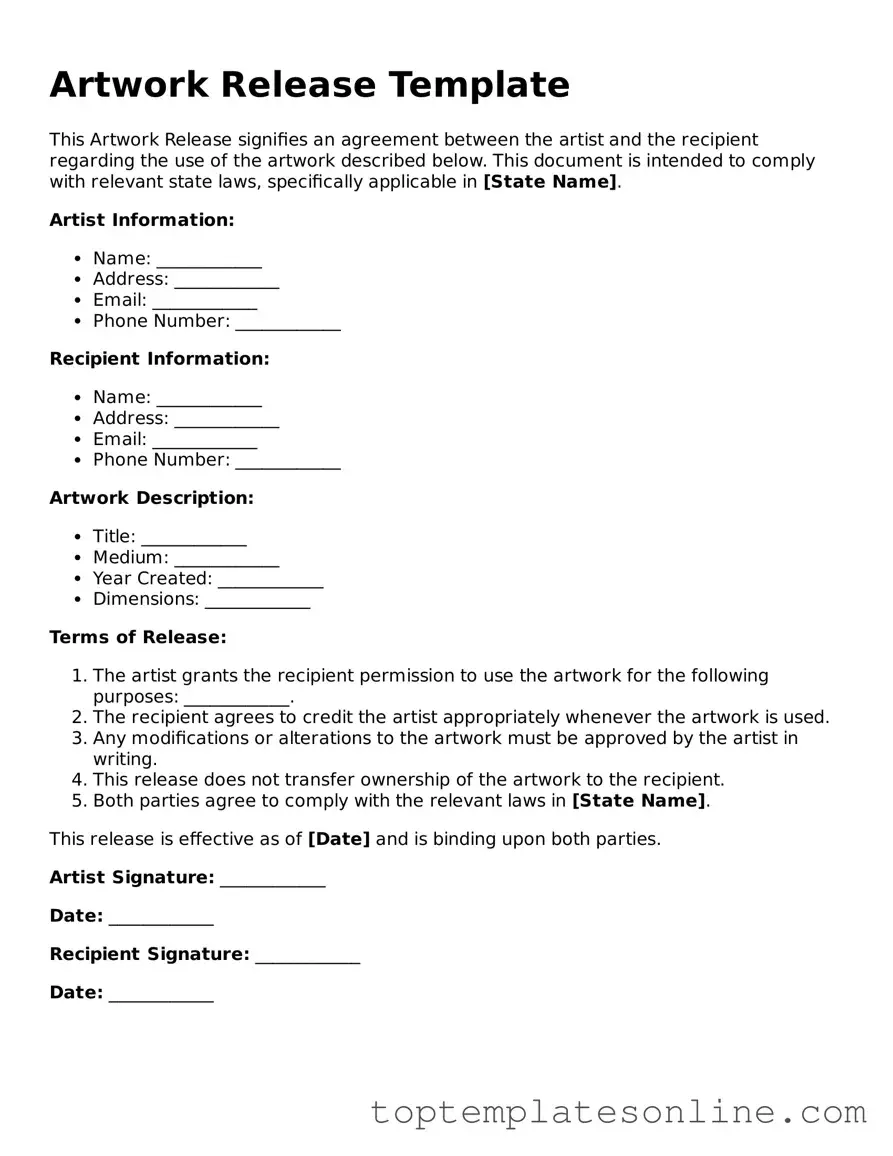When it comes to sharing and promoting artwork, the Artwork Release form plays a crucial role in ensuring that artists retain control over their creations while granting permission for others to use them. This form serves as a legal agreement between the artist and the party seeking to use the artwork, whether for marketing, publication, or display purposes. Key elements of the Artwork Release form include the identification of the artwork, the scope of usage rights granted, and any compensation arrangements. Additionally, it often outlines the duration of the agreement and any limitations on how the artwork can be used. By clearly defining these aspects, the form helps prevent misunderstandings and protects both the artist’s rights and the interests of the party using the artwork. Understanding the significance of this document is essential for artists and organizations alike, as it fosters a respectful and professional relationship in the creative community.
